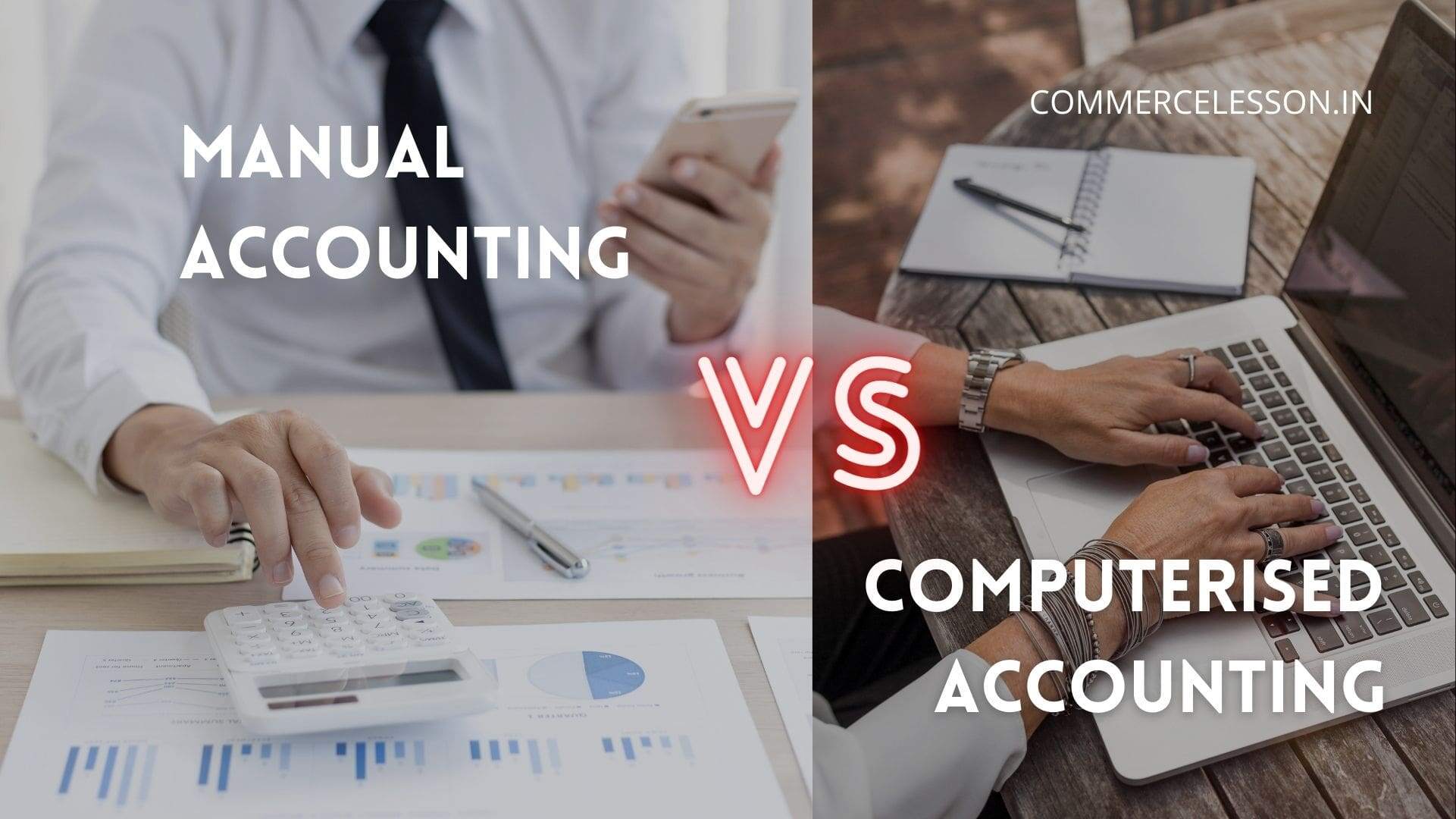In this article, we will discuss what is the ‘Difference between Manual Accounting and Computerised Accounting’. But first we will look at the definition of Manual Accounting and Computerised Accounting.
Define Computerized Accounting and distinguish between manual and computerized accounting system.
Definition of Manual Accounting
When books of accounts are prepared and maintained by accountants i.e. accounting records are prepared manually, it is called Manual Accounting.
Definition of Computerised Accounting
When accounting records are maintained in computer by the help of an accounting package (e.g. FACT, TALLY, etc), it is called Computerised Accounting.
Read Also:
Journalize the following transactions, Post them into ledger and prepare a Trial balance.
Make necessary ledger accounts in the books of Harpal Singh.
Prepare consignment account and abnormal loss account in the books of the Consignor.
Rectify the errors and prepare the suspense Account.
Difference between Manual Accounting and Computerised Accounting
| Basis | Manual Accounting | Computerised Accounting |
|---|---|---|
| 1. Nature | Manual accounting is labour-intensive. | Computerised accounting is capital-intensive. |
| 2. Up-to-date information | Manual accounting cannot provide up-to-date information quickly and economically. | Computerised accounting can provide up-to-date information instantly and at negligible cost. |
| 3. Consistency of information | Manual accounting may provide inconsistent information depending on the skill of accounting clerks. | Computerised accounting will provide accurate and consistent information irrespective of operators’ skill. |
| 4. Relevant information | In manual accounting, all relevant information may not be available from other clerks because of their non-cooperation. | In computerised accounting, any relevant information can be gathered by clicking the mouse of the computer. |
| 5. Transfer of information | In manual accounting, transfer of information and data to other locations is very time consuming and costly. | In computerised accounting, information and data can be transferred in no time through e-mail. |
| 6. Presentation | In manual accounting, preparation of different reports and charts for presentation before the top management in short notice is almost impossible. | In computerised accounting, it is very much possible. |
| 7. Stationery requirement | Manual accounting requires huge printed stationery to maintain different accounting records and documents. | In computerised accounting, all records can be maintained without using much stationery. |
| 8. Maintaining old records | In manual accounting, maintaining of old records are very difficult and costly affairs. | In computerised accounting, old records can be captured in CD or Hard Disk Drive at very low cost. |
| 9. Retrieval of old records | In manual accounting, retrieval of important data from old records is almost impossible. | In computerised accounting, retrieval of old data from CD or Hard Disk Drive is very easy and quick. |
| 10. Preparation of books of accounts | In manual accounting, preparation of books of accounts like final accounts, cash flow statement, funds flow statement is time consuming. | In computerised accounting, books of accounts can be prepared very quickly and accurately. |
| 11. Suitable organisation | Manual accounting is suitable for small enterprises. | Computerised accounting is suitable for big enterprises. |
Liked our post?
We are available with lots and lots of commerce related contents.





[…] […]
[…] Define Computerized Accounting and distinguish between manual and computerized accounting system. […]
[…] Define Computerized Accounting and distinguish between manual and computerized accounting system. […]